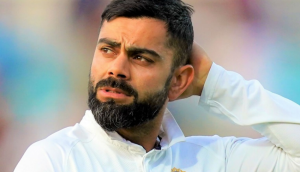One year on, has cricket learnt anything from Phil Hughes' death?

Starting next season, English cricketers will have to wear mandatory helmets while batting, keeping wickets or fielding close to the stumps.
The England and Wales Cricket Board (ECB) chief medical officer Nick Peirce confirmed this decision and said they have decided to take appropriate precautions keeping in view the significant injuries that have been observed from players being hit by cricket balls while not wearing adequate protection.
It has also been made mandatory for helmets to be produced keeping in mind the latest safety standards. But has it all been a tad too late?
Phil Hughes' unfortunate example
By their very nature, sports that involve projectiles of balls at speeds nearing ninety miles an hour, or with the potential of high-impact collisions of bodies moving at high speeds, carry an underlying risk of serious injury.
The unfortunate death of Australian batsman Phillip Hughes from an injury he sustained on the cricket pitch while playing a Sheffield Shield match at the Sydney Cricket Ground on 27 November 2014, threw open the discourse on safety in sports like never before.
At the time Hughes was struck by the bouncer that was bowled by Sean Abbott, he was wearing the full protective gear that batsmen are required to as dictated by the unsaid norm. The batsman's use of protective equipment while batting is not decreed by the governing body of the sport (The International Cricket Council), and even the Marylebone Cricket Club which protects the laws of the game does not make it compulsory for batsmen to wear a helmet while on the pitch facing the bowler, regardless of whether he is bowling fast or spin.
However, the tragedy inevitably put pressure on the lawmakers of the game to even lay down the detailed specifications of what kind of safety equipment players have to wear, apart from making them mandatory.
The need to start education at the grassroots
Above everything else, the need of the hour is to sensitise young, budding cricketers about the safety precautions that must be taken while playing the sport - be it practicing in the nets or on the field during an actual match. Unfortunately, youngsters would rather do without the bulk of the equipment while playing, even as their coaches continue to stress its importance.
One only needs to look as far as the Maidans of Mumbai - the one Indian city which is most synonymous with junior cricket - to see that wearing helmets is not the norm.
"Sunil Gavaskar ne kabhi helmet nahi pehna, woh world ka best batsman tha," said nine-year-old Ganesh who plays in one of the many private academies set up in Azad Maidan, when asked why he wasn't wearing a helmet while batting in the nets.
The lesson we learn? Icons of the game set examples.
Rope in the legends
It would definitely help if legends of the sport like Gavaskar himself came out and spoke about the need to wear the requisite protective equipment while playing the sport. Ganesh's coach Churchill also stressed on how wearing a helmet while batting in his academy is non-negotiable for youngsters, but how tough it was to actually see it through.
"There are over 60 children in my academy and two nets run simultaneously at any given point of time. Children wear a helmet while facing the first few balls, but then take it off after some time. We must be stricter with this."
Sport represents some of the finest traits of the human spirit, but there is always a lesson to be learnt if it has an unwelcome and unfortunate outcome. A year after Phil Hughes' death, the safety norms must further be strengthened and the response time to potentially fatal injuries must be quickened not just in Cricket, but across all sports so that such a tragedy may never occur again. While the ECB's decision is a step in the right direction, the real steps must be taken at the grassroots.







![BJP's Kapil Mishra recreates Shankar Mahadevan’s ‘Breathless’ song to highlight Delhi pollution [WATCH] BJP's Kapil Mishra recreates Shankar Mahadevan’s ‘Breathless’ song to highlight Delhi pollution [WATCH]](https://images.catchnews.com/upload/2022/11/03/kapil-mishra_240884_300x172.png)

![Anupam Kher shares pictures of his toned body on 67th birthday [MUST SEE] Anupam Kher shares pictures of his toned body on 67th birthday [MUST SEE]](https://images.catchnews.com/upload/2022/03/07/Anupam_kher_231145_300x172.jpg)






